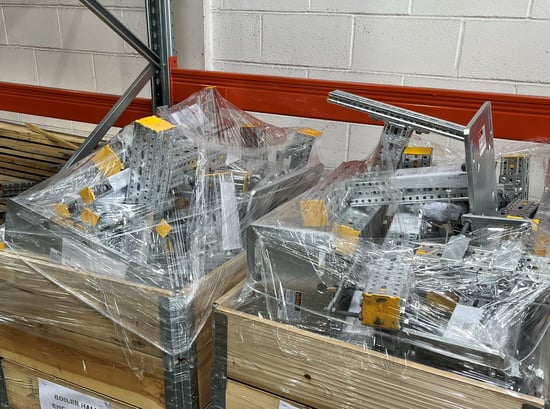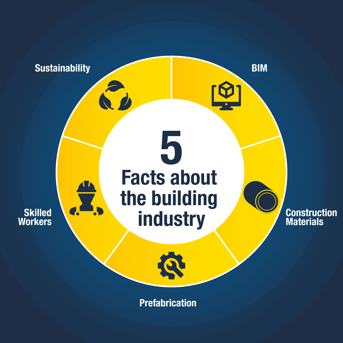By Sikla UK Oceania on 22 December 2023
The construction industry is in a phase of dynamic change. From advanced construction technologies to sustainability and digitalisation - these trends are not only forming the current landscape but are also paving the way for the future of construction. In this brief overview, we take a look at the 5 trends transforming the building industry.
BIM
The future of Building Information Modelling (BIM) is providing ground-breaking technological innovations. The development of BIM has provided:
- Digital twins for real-time simulations,
- IoT sensors for monitoring,
- 5G for real-time collaboration,
- Advanced visualisation with VR and AR,
- AI for data analysis,
- Automation and robotics,
- Blockchain for data security
- Integration of drones for data collection.
These developments promise more precise, efficient and sustainable major construction projects and make the future of BIM a key component within the industry.
Construction materials
Building materials will be characterised by technological innovations to increase efficiency, durability and sustainability within projects. Materials we are likely to see soon on construction sites will be:
- Graphene and nanotechnology for strength,
- Self-healing materials,
- Improved insulation,
- 3D printed,
- Smart building materials,
- Transparent solar cells,
- Bio-based materials,
- Ultra-light composites,
- Digital manufactured
Innovators can use these materials to develop pioneering within projects and redefine the construction industry.
Prefabrication
Prefabrication offers precise and high-quality components that will shorten construction times and reduces costs through efficient utilisation of the material. Advanced technologies and stringent quality controls improve safety and enable creative innovation. Prefabrication minimises the effects of weather conditions, increases flexibility and reduces safety risks for workers. Companies that master these techniques can make construction projects more efficient and cost-effectively which are at the forefront of technological development.
 Prefabricated frames ready to be dispatched to site
Prefabricated frames ready to be dispatched to site
Skilled Workers
The shortage of skilled labour requires strategic measures to overcome it. The necessary steps to improve the shortage will be:
- Training and upskilling the existing workforce,
- Creating safe and attractive working conditions,
- Integrating technology,
- Promoting diversity,
- Partnering with educational institutions,
- Better planning and talent management.
By investing in education and technology, the industry can ensure a sustainable and successful future.
Sustainability
Sustainability has long been at the centre of the building industry. The main focus points have included:
- Environmentally friendly materials,
- Energy efficiency,
- Durability,
- Recyclability and waste reduction
- Product life cycle analyses.
Digital technologies, training and industry-recognised certifications also play an important role. Sustainability goals and M+E support systems support the environment to make construction projects more efficient and cost-effective. The industry is investing in green innovations and practices to make the future more sustainable.
With these five ground-breaking trends, the construction industry is facing an era of innovation and sustainable change. The dynamic fusion of technology, sustainability and digitalisation is not only shaping the present but also paving the way for future developments.

But which of these trends do you see as particularly decisive? What potential and challenges arise from this new era of construction? The answers lie in your perspective and experience.
Written by Sikla UK Oceania


Comments